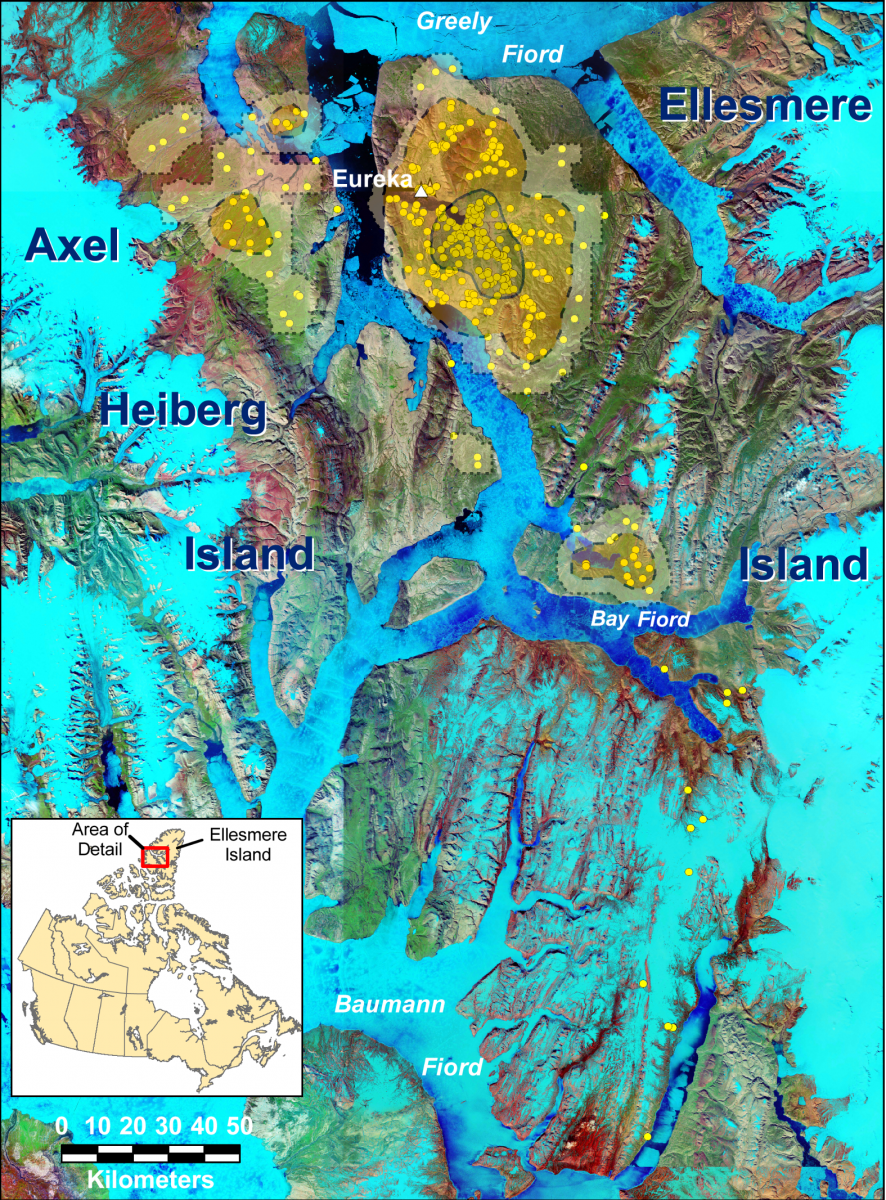Information is lacking about wolf movements anywhere near the northern extreme of the species’ range in the High Arctic (> 75º N latitude). In this area, wolves prey primarily on muskoxen and must survive 4 months of 24 hour/day winter darkness and temperatures reaching -53 ºC. The extent to which wolves remain active and prey on muskoxen during the dark period is unknown. The closest area with information about winter wolf movements is > 2,250 km south. As part of a broad USGS study of wolves (on the Endangered Species List in the 48 conterminous States), a pack of 20+ wolves on Ellesmere Island, Nunavut, Canada (80º N latitude), was monitored from July 2009 through mid-April 2010 by collaring the lead wolf with a Global Positioning System (GPS)/Argos radio collar. The collar recorded the wolf’s precise daily locations at 6:00 a.m. and 6:00 p.m. and transmitted the locations by satellite to USGS email addresses. Straight-line distances between consecutive 12-hour locations varied between 0 and 76 km with a mean distance of 11 km. Total minimum distance traveled was 5,979 km, and the total area covered was 6,640-km², the largest wolf range reported. The lead wolf and presumably his pack once made a 263-km (straight-line distance) foray during the period from January 19-28, 2010, returning over the next 3 days at an average rate of 41 km/day. This study produced the first detailed movement information about any large mammal in the High Arctic. Wolf movements during the 4-month period without direct sunlight showed little change in movements, matching those of the other seasons and generally those of wolves in lower latitudes.
http://www.plosone.org/article/info%3Adoi%2F10.1371%2Fjournal.pone.0025328
 Ellesmere Island, Nunavut, Canada, and vicinity with 554 locations of a wolf pack of about 20 wolves.
Ellesmere Island, Nunavut, Canada, and vicinity with 554 locations of a wolf pack of about 20 wolves.

